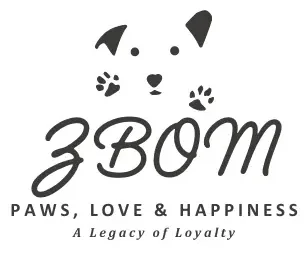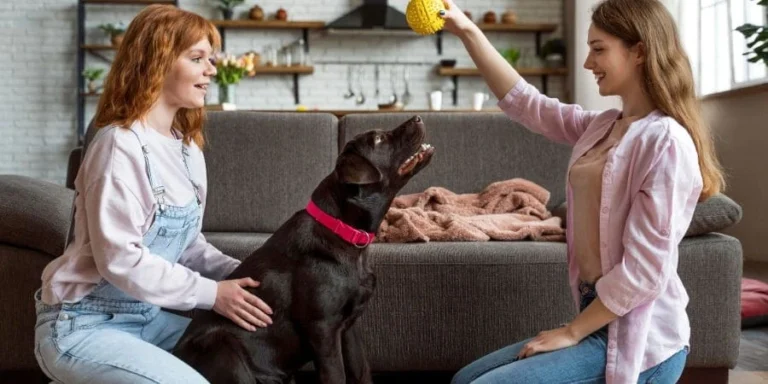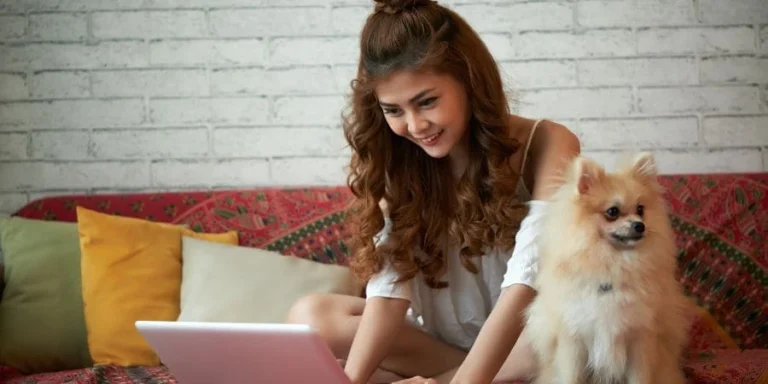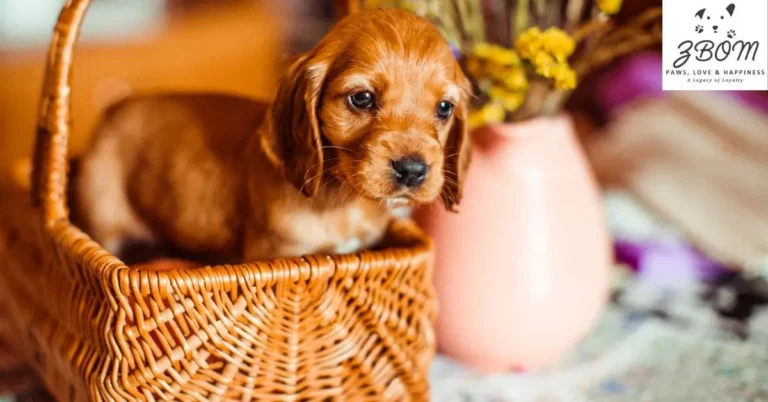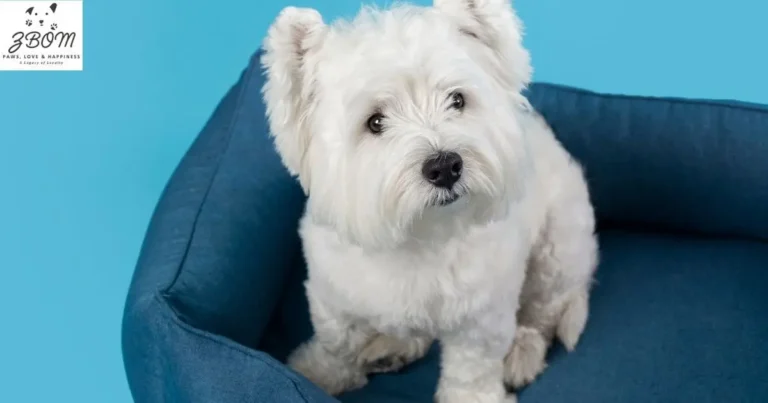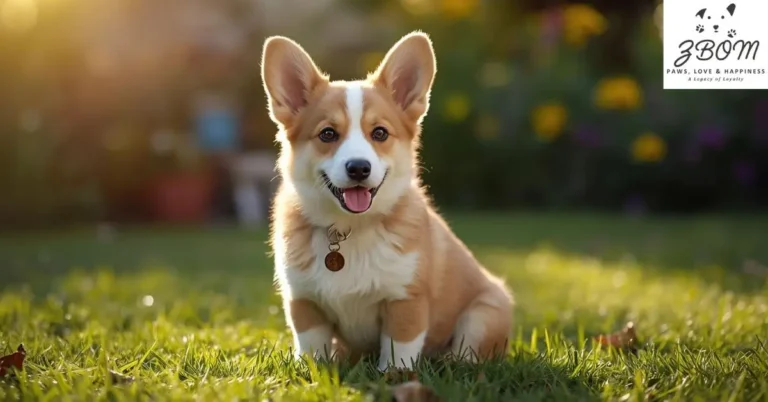
Whelping Box French Bulldog
A whelping box is one of the most essential items for any Whelping Box French Bulldog breeder or pet owner preparing for the arrival of puppies. The right whelping box provides a safe, warm, and comfortable environment where the mother can give birth and care for her newborns without stress or danger.
Because French Bulldogs are a small and delicate breed, they need extra care during whelping, and having a properly designed box makes a huge difference in the health and safety of both the mother and her pups. A good Whelping Box for French Bulldogs should be sturdy, easy to clean, and sized appropriately to prevent accidental injury to the puppies. It also helps the mother feel secure, reducing anxiety during and after labor.
Zbom, Whether you are an experienced breeder or a first-time pet parent, understanding how to choose and set up the right whelping box is vital. From selecting suitable materials to ensuring temperature control and hygiene, every detail matters. Investing in the perfect whelping setup ensures a smooth, safe, and comfortable birthing experience for your beloved French Bulldog and her tiny companions.
Short Answer About What is whelping?
Whelping is the process of a dog giving birth to puppies. It typically involves contractions and the delivery of each puppy. The mother dog will clean and nurse the puppies right after birth. Whelping usually occurs in a quiet, safe environment to reduce stress. Proper care and monitoring are essential for both the mum and puppies during this time.
Also Read: 6 Best unblocked premium games to try
What is whelping?
Whelping is a delicate stage in a dog’s life that involves the complete process of dog giving birth and nurturing her young ones. The dog labor phase can be challenging, which is why understanding the whelping process is essential for every pet owner or breeder. Proper care during dog pregnancy ensures that the dog delivery goes smoothly and safely. However, complications during whelping can sometimes occur, making it important to be prepared and attentive to the mother dog’s needs.
Once the newborn puppies arrive, they require warmth, comfort, and protection during their early days of puppy birth. Pomeranian for Sale, A calm environment promotes safe whelping and reduces stress during the dog birthing process. Canine whelping demands patience, observation, and the right setup to guarantee healthy growth for both the mother and her pups.
Responsible dog breeding involves not only preparing for the birth but also ensuring ongoing whelping care throughout the recovery period. By staying informed and providing proper support, you can make the whelping journey a safe and positive experience for your beloved pet.
Also Read: How Old does a Dog have to be a Breed
When is my bitch’s due date?
Understanding the dog due date is an important part of managing a healthy dog pregnancy. It helps owners prepare for dog labour and recognize the early signs of labour in dogs. Knowing the exact whelping date allows enough time to get everything ready, especially if the dog is expecting a large litter. The dog gestation period generally lasts about 63 days pregnancy, though it can vary slightly depending on litter size.
Keeping track of the dog mating date or dog ovulation date helps you estimate when your pet is due to whelp. Blue Pomeranian, During this stage, pregnant dog care is essential to ensure the mother remains healthy and stress-free. Proper nutrition, rest, and a calm environment all contribute to a smooth delivery.
Preparing for whelping ahead of time also ensures you’re ready to assist if needed. As the dog birthing time approaches, close observation and gentle support will help make the process safer and more comfortable for both the mother and her puppies.
How can I prepare for birth
When a dog is pregnant, it is important to be registered with a vet for proper advice. In case of an emergency during whelping, keep the telephone number of the vet ready. The breeder can guide you about normal labour and help you understand possible problems during pregnancy. Being familiar with these things can prevent any serious issues.
Also Read: How to Determine French Bulldog Litter Size
What will I need to help my dog during whelping?
When a dog is ready to whelp, prepare for labour by setting up a whelping box with absorbent material such as newspapers, puppy pads, incontinence pads, or vetbeds. Keep clean towels and paper towels ready for cleaning and drying the puppies.
Have sterilised scissors available to cut the umbilical cord if needed. Provide a heat source like heating pads or hot water bottles to keep the puppies warm. Use a notepad to record time intervals between contractions. Keep digital scales to weigh the puppies and monitor their weight gain. After labour, replace with clean bedding to keep the area fresh and comfortable.
What is a whelping box?
A whelping box is essential to keep puppies safe during birth and afterward. Caramel Pomeranian, It should be large enough for the bitch to move comfortably and stay comfortable and warm. The box must have a waterproof base and be lined with bedding that is absorbent and easily cleaned, such as vetbeds, towels, or a whelping pad.
It should be secure, with pig rails to prevent puppies from being crushed. Avoid using hay, wood shavings, or straw because they can harm the puppies’ skin and eyes. Also, do not use small blankets or cloth, as puppies may get smothered by them or by their mum. The box keeps the puppies protected from the cold throughout the process.
Also Read: Navigating Health Insurance Options for the Self-Employed
Can I use a crate as a dog whelping box?–
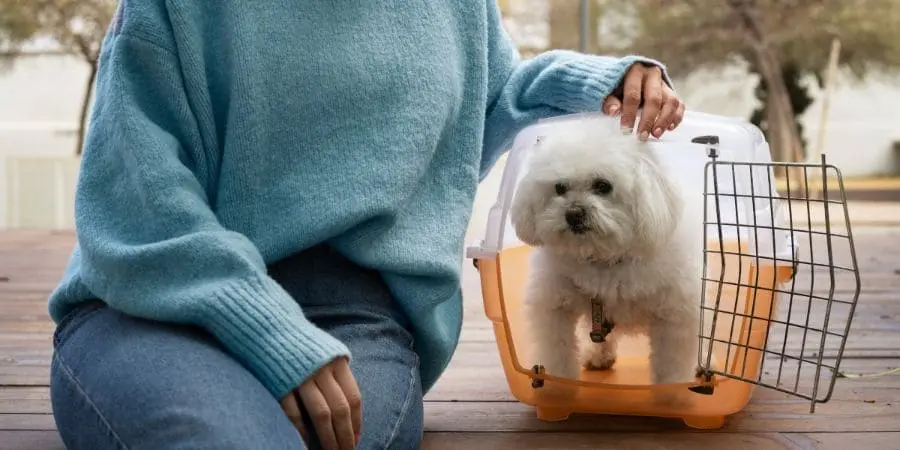
A whelping box is essential for a dog giving birth to puppies, providing a safe and suitable space for them. You can buy a box specially designed for comfort and protection or build one yourself. Some owners repurpose or use an adapted crate, ensuring it’s cozy and secure. The box should prevent puppies from getting their head or body caught between bars or edges, keeping them from getting stuck and ensuring a stress-free environment for mother and pups.
Do all dogs nest before whelping?
In the last stages of pregnancy, most dogs begin to display nesting behaviours. This is a natural instinct that drives them to search for a safe place and a quiet place where they can give birth and care for puppies. Often, they may try to dig holes in the garden, especially under bushes, as part of this instinctual behavior.
To ensure comfort and safety, it’s important to introduce the dog to her whelping box early. This helps her become used to whelping box before she goes into whelp, allowing her to feel secure and prepared for the arrival of her puppies.
Also Read: 2025 Nissan’s Frontier vs. Competitors
What is the best place for my dog to give birth?
When setting up a whelping box for your dog, it is important to choose the ideal location. The whelping box should be placed in a comfortable, warm room that is not draughty. This ensures that the dog and her puppies stay safe and cozy. The area should provide peace and quiet so the dog is not disturbed during this critical time.
A busy family sitting room is usually not the best choice for the whelping box. Instead, a better place would be somewhere calm and away from noise and activity. When you choose location carefully, your dog will feel more relaxed and able to care for her puppies properly.
When should I put my dog in a whelping box?
It is important to give your dog time to get used to the whelping box. Make sure the whelping box is set up, in position, and ready for use about one week before she is due to whelp. LuLu Pomeranian for Sale, This will give your dog plenty of time to explore the whelping box, get comfy, and make it feel like her own safe space.
How can I keep my puppies warm?
When puppies are born, it’s important to keep the whelping box at approximately 29°C to 32°C to keep them warm. Puppies need to regulate body temperature as they grow, but initially, they may snuggle up to their mum to stay warm. It is a good idea to provide an extra heat source such as heat lamps, heating pads, or microwavable heat pads.
The heat source position should allow puppies to move away if they get too hot. It should not restrict mum movement, allowing her to get up, move around the whelping box, or leave the box to get water. The heat source must have no wires and be chew proof for safety. Ideally, it should be placed in the centre of the box to prevent squashing when mum lies down near the edges.
A thermometer should be used to monitor temperature and ensure it is not too hot or not too cold for the puppies.
Should I leave my dog alone during labour?
It’s important to be with your dog when she delivers puppies, especially if you are new to breeding, it’s your dog’s first time, your dog is slightly older, or if there have been any complications during pregnancy. Being on standby allows you to jump into action if needed.
Mercedes-Benz Bellevue, Every dog has a different dog preference; some like their owners with dog during delivery, while others may want more space. If your dog would rather be left alone, try to be involved as little as possible or stay at a distance to help her feel less stressed.
What to feed a whelping dog
It is normal for your dog to not want to eat before labour or during labour. Labour can be thirsty work, so it is important that your dog stays hydrated. Make sure she has access to plenty of cool water if she needs water.
What are the first signs of whelping?
A bitch’s temperature drop by about 1°C one to two days before labour can serve as an early warning. To monitor this, take temperature and record temperature two to three times a day from about a week before due date.
The first signs a dog due to whelp may show include being restless, nesting by gathering bedding, circling, or digging floor. Teacup Pomeranian Prix, She may look for a quiet place, often the whelping box. Other signs include eating less, producing milk, licking genitals, being sick, diarrhoea, panting, and shivering.
A mucous plug from the vagina, usually white or clear but sometimes red/brown, may appear closer to labour. As contractions begin, they become stronger contractions and closer contractions. Eventually, waters break.
If you have doubts during labour, speak to vet immediately. It is helpful to contact an experienced breeder for non-urgent questions or general guidance. For first-time breeders, guidance from experienced breeder is invaluable.
How long does dog whelping last?
The whelping duration very much depends on the number of puppies expected. Most dogs take around 3 to 12 hours to birth entire litter, but this may differ between different dogs and vary between breeds. Dogs with slimmer heads tend to birth quickly compared to dogs with bigger or wider heads.
Also Read: 7 Best Bichon Frise and Shih Tzu Mix Qualities
Some dogs may birth one or two puppies quickly and then rest between puppies before labour continues. Labour duration shouldn’t be more than 24 hours. If labour is too long or labour is not progressing between puppies, always speak to vet urgently.
What happens during whelping – a step-by-step guide
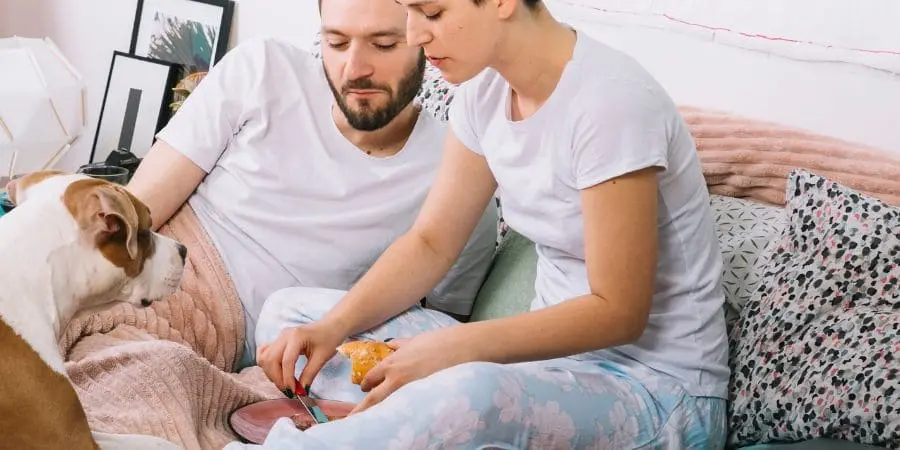
During labour, your dog will experience contractions, which soon become strong contractions. She may start panting heavily as she begins to strain and prepare for pushing puppy out. You might notice some discharge which can be clear discharge or bloody discharge; this is normal. However, if there is excessive bleeding, you should immediately contact vet.
The first puppy usually takes the longest to arrive. The exact puppy arrival time depends on the number of puppies and the strength of her contractions. As the puppy is born, it often appears inside the amniotic sac, a thin membrane that may burst along with the placenta. Puppies can come head first or tail first, both being normal.
Once born, your dog will begin licking puppies to clean them and will chew through the umbilical cord. Teacup Pomeranian Los Angeles, She generally manages well on her own, but if assistance is needed, ensure the membrane is broken and the puppy’s airways are clear to encourage breathing stimulation. Some breeders gently rub the puppy with a towel or rub the puppy’s nose sideways on the mother’s nipple to encourage feeding if the puppy has difficulty taking milk.
Sometimes, a small amount of green discharge may occur due to the puppy’s placenta which is greenish-black in color. However, an excess of green or dark discharge, especially if no puppy has been born recently, could indicate a problem requiring vet contact.
Between puppies, your dog should appear comfortable and settled until the next one arrives. There is usually a gap between puppies of 15 to 30 minutes. If she is not straining for over two hours or has been straining for 20 to 30 minutes without a puppy, you should contact vet immediately.
Also Read: 7 Factors That Make Ole Miss Men’s Baseball Great
During the birth process, your dog will deliver birthing placentas separately from the puppies. The placenta provides nutrients and oxygen to the developing puppies. Some dogs deliver one puppy followed by its placenta, while others deliver multiple puppies and then their placentas, both are normal.
Many breeders keep track by counting puppies and placentas as they are born to ensure none are retained. Retained placentas can cause infection. It is normal for your dog to be eating placentas to keep the nest clean, but eating too many can cause sickness or diarrhoea, so it’s best to limit this. Some breeders remove placentas from the whelping box promptly.
Most dogs don’t require helping birth, but some breeders assist by cleaning puppies, ensuring they are breathing, and cutting umbilical cord if needed. Having an experienced breeder on hand during birth is always beneficial.
Finally, schedule a vet check-up two to three days after birth to ensure your dog and her puppies are healthy and recovering well from the birth process.
Should I count the afterbirths?
It’s important to count placentas during dog births, but this can be difficult to count because some dogs may eat placenta as soon as it’s produced. This makes it hard to keep track unless you are constantly watching dog closely. If the placenta isn’t passed right away, it may break down and be expelled when your dog goes to the toilet, usually within 24-48 hours.
A retained placenta can lead to infection, so if you notice any bloody discharge or unpleasant-smelling discharge coming from your dog’s vaginal discharge in the days following birth, you should contact your vet immediately.
Problems during whelping
Most dogs whelp their puppies smoothly without facing any problems. However, sometimes issues can arise during birth or after birth. It’s important to monitor your dog closely in these times to ensure both the mother and her puppies stay healthy. If any complications occur, prompt action may be necessary to address the problems and support the successful whelping process.
How are puppies normally born? Do they usually come out backwards?
Puppies are usually born head first, known as anterior presentation, or back legs first, called posterior presentation. Both of these positions are normal during birth. However, if a puppy comes tail first, which is called breech presentation, it can cause difficulties. If you notice the tail dangling out of your dog’s vagina, or if your dog is having trouble and seems difficult to pass the puppy, especially if there is a lump near the vulva, you should immediately contact vet for assistance.
How do you know if a puppy is stuck?
Most dogs whelp their puppies smoothly without facing any problems. However, sometimes issues can arise during birth or after birth. It’s important to monitor your dog closely in these times to ensure both the mother and her puppies stay healthy. If any complications occur, prompt action may be necessary to address the problems and support the successful whelping process.
Can puppies be born 24 hours apart?
Puppies can very occasionally be born 24 hours apart, but this is not normal. If your dog in labour has been so for 24 hours and there are more puppies expected, or if she is still having contractions, you should immediately contact vet for advice. It is important because the puppies need to come out, and your dog exhausted may struggle to care for puppies properly.
When to contact your vet
Dog whelping can sometimes involve serious complications that require immediate help from a vet. An experienced breeder should always be on standby to assist during the first stages of whelping. Signs such as restlessness, pacing, and panting without contractions, or waters broken but no puppies being delivered, are concerning. If the dog is straining but no sign of a puppy or part of a puppy appears in the birth canal, this indicates a problem.
Watch closely for dark discharge, green discharge, bleeding, or foul-smelling discharge, as these are signs of serious whelping complications. If the dog is tired, showing discomfort, chewing or licking the vulva excessively, or appears sick, unwell, or collapses, immediate vet contact is necessary. Abdominal pain and puppies not feeding, crying, or placentas not passed also require urgent attention.
During the process, it is important to keep the puppies warm using a heat pad or hot water bottle, and protect them carefully. Always bring the puppies and mother to the vet if any complications arise.
How to know when your dog has finished whelping
When your dog starts whelping, the process can be both exciting and stressful. Labour typically lasts between 3–12 hours, though it can sometimes go on for longer. Understanding the signs and knowing what to expect can help ensure the safety of both the mother and the puppies.
If your dog has had a pre-whelping x-ray or scan, you may already have an estimate of the number of puppies she is expected to deliver. This can serve as a helpful guide to compare with the number of puppies she actually gives birth to. However, keep in mind that pre-whelping scans are often difficult to read accurately, and they should only be used to estimate puppies, not as a definitive count.
If you find that your dog has stopped delivering puppies but there has been no sign of puppies for over two hours, it’s time to contact your vet. This could indicate that there are still puppies remaining, and a professional should assess whether any intervention is needed. Always compare puppies with the number you were expecting puppies to ensure no one is left behind.
Proper care and attention during this time are crucial to the well-being of both the dog and her puppies. With the right preparation and support, the whelping process can go smoothly.
What should I do after my dog gives birth?
After all the puppies are born, your dog will need time to care for her new litter and bond with them. It’s important to give her the space and time she needs to rest and recover. Ensure that she is comfortable in a quiet and calm environment, free from distractions. This helps her focus on her puppies and feel secure.
During this time, your dog may also feel hungry and thirsty. When feeding her for the first time after labour, it’s best to do so in the room where she whelped. Some breeders prefer to place her food outside the whelping box, while others choose to give it to her inside the whelping box, making sure to clear it up once she’s finished eating. This ensures the area remains clean and safe for the puppies.
Don’t forget to contact your vet and inform them that your dog has just had puppies. Your vet may offer a home visit to check on both the bitch and her puppies, ensuring they are all healthy. This is a crucial step, as the first vet visit after whelping allows the vet to assess both mother and puppies for any potential health concerns.
Taking these steps will help ensure that your dog and her puppies remain happy and healthy during their early days together.
When can I touch a newborn puppy?
Once a newborn puppy is born, it’s important to know that you can touch them right away. Most dogs instinctively care for their puppies by cleaning them, licking them, and ensuring they are able to breathe properly. However, if you’re a breeder, you may want to be proactive in helping your dog with the cleanup process. One common practice is to check the puppy’s nose and mouth to make sure they are clear of any fluids or obstructions that could interfere with their breathing.
If necessary, gently rubbing the puppies can help stimulate them to start breathing and encourage proper circulation. While dogs typically handle this on their own, breeders often lend a hand to ensure the process goes smoothly, especially if the mother is exhausted or the puppies need extra support in their early moments.
Next step – rearing and raising your puppies
Now that your puppies are born, it’s essential to make sure you’re doing everything correctly to ensure they are healthy and well-prepared before they go off to their new homes. This includes providing proper care, socialization, and any necessary veterinary check-ups, so they’re ready to transition to their new families. By following the right steps, you help ensure a smooth and safe move for your puppies when it’s time to say goodbye.
Conclusion
In conclusion, providing a whelping box for your French Bulldog is an essential part of ensuring a safe and comfortable environment for both the mother and her puppies. The right whelping box offers ample space, proper ventilation, and easy access for you to monitor the process, all while keeping the puppies warm and secure.
Remember, the well-being of both the mother and the newborn puppies relies heavily on your preparation and care during this critical time. By setting up a suitable whelping area, you’re giving your French Bulldog the best chance for a smooth delivery and a healthy start for her puppies.
FAQ
Should my pregnant dog sleep in her whelping box?
Place the whelping box in a quiet corner of your home with dog blankets, pillows, and towels to help your pregnant dog rest, nest, and feel comfy.
Do you put blankets in a whelping box?
A whelping box with hay, wood shavings, and straw keeps puppies safe. Puppy skin, eyes, and blankets need care. Puppies crawl and can get smothered if not supervised. Mum’s large piece of vetbed ensures comfort.
Should I put a heating pad in the whelping box?
Heating pads in the whelping box keep puppies safe from danger, preventing burning and allowing them to move away if feeling too hot.
How many nipples should a French Bulldog have?
French bulldogs, like all dogs, have 6 to 10 nipples in rows on their chest and belly, with the number varying between individuals, not depending on sex, breed, or age.
What to do immediately after a dog gives birth?
Mum should bond with puppies in a quiet, warm, safe environment. Keep the whelping area clean and comfortable, handle and rub puppies at 3-4 days to reduce stress and improve human contact later in life.
